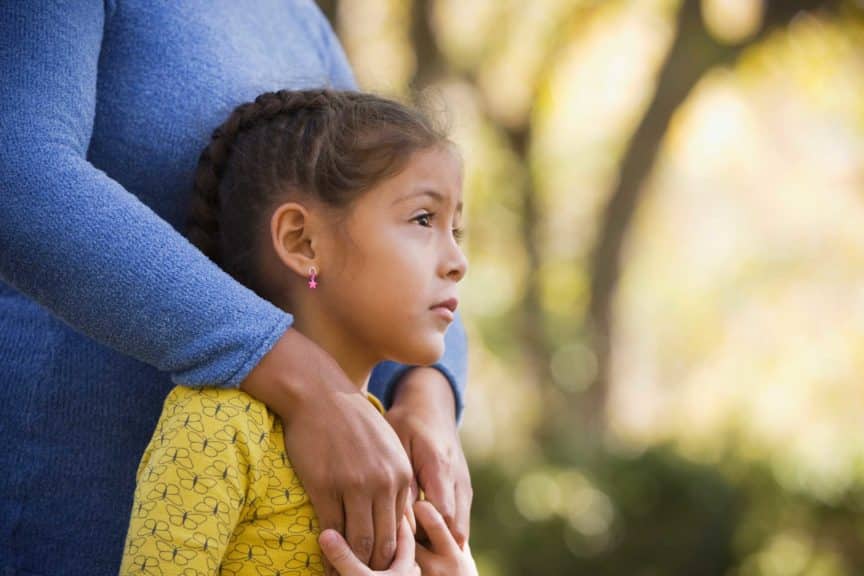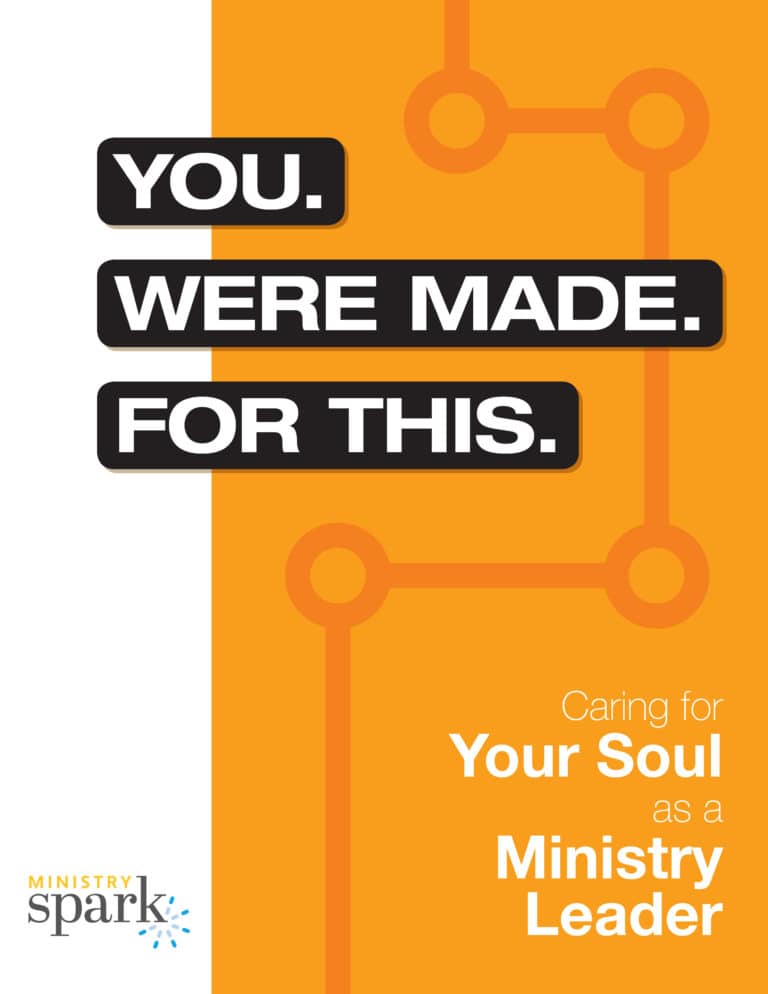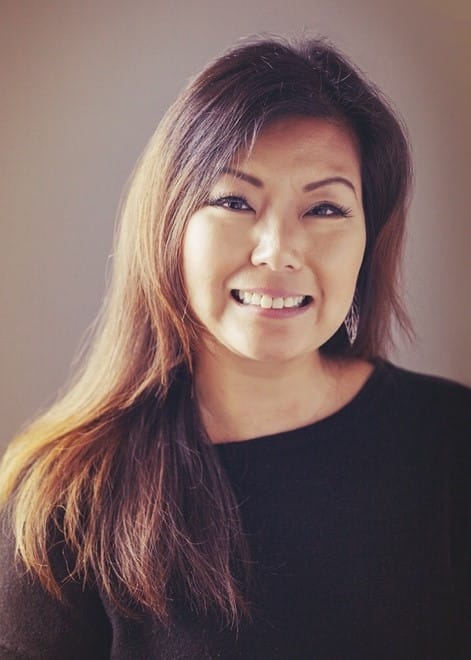The CHURCH can stand united as one body.
I’m a westernized Korean-American who finds herself in the midst of a lot of conversations about racism … especially in the church ministry world.
That’s partly because I’ve transitioned from serving in an all-Korean church, to a mixed Asian-American church, to a multiethnic church during the past 25 years I’ve been in ministry. But that’s not where my story starts.
I’m a Korean-American who grew up in Olathe, Kansas, before the vast majority of my peers even knew that South Korea existed—let’s call this the pre-Seoul-Summer-Olympics period. But then when I moved to Los Angeles, California, in the summer of 1986 at the tender age of 13, I went through reverse culture shock.
Reverse Culture Shock
I was so used to being around white Americans, I didn’t know what to do when I walked into a junior high school where the majority of students were minorities.
I had assumed that I would befriend blonde-hair, blue-eyed girls. But when I tried to approach those girls on the first day, they made it clear that they weren’t comfortable talking with me. There were only two girls who initiated a conversation with me—they were El Salvadorian–American and Korean-American.

This was the first time I realized how strong segregation still was in this country.
When I was in the Midwest, my family worked extremely hard to assimilate into American culture so that we’d have bright, successful futures. But in Los Angeles, I found myself mostly hanging out with other Asian-Americans, with just a few “others” sprinkled in the mix.
This was the first time I realized how strong segregation still was in this country.
I have to admit that this felt a bit strange to me. But when you’re a teenager, you become friends with the group that accepts you.
For the next 30 years, I had a group of Asian friends and also a group of white friends in which I felt like I was the token minority.
I was supposed to represent Asian culture, but let’s be honest—even my own family thinks I’m a lousy Asian because I’m too “whitewashed.”
Talking About Racial Topics
In the past five years, I have been engaged in more and more conversations concerning race. And unless you’ve been living under a rock, you know that racial issues are hot and divisive topics that frequently take center stage in the politics of this country—whether the conversation is about border issues or immigration or refugees or violent acts against minorities throughout the country.
As a minority who grew up in the Midwest, I can attest to the fact that racism never went away and has gotten even worse in some areas. While we want humanity to progress toward understanding and keep getting better, racism in the WORLD can’t go away—it’s part of Satan’s arsenal.
However, the CHURCH can stand united as one body.
In recent years, it’s become apparent that there are many who seem to feel more comfortable with the open expression of racism than just a few decades before.

I won’t lie. I used to think I could adapt to living anywhere in America. But I’ve been part of enough heated conversations in the past four years to realize that there are many parts of this country that have not been exposed to people of different ethnic backgrounds.
The honest truth is that there are many parts of this country that lack diversity—though that isn’t necessarily intentional.
What I’ve come to learn is that when you aren’t pursuing personal relationships with people who are different from you, it is very difficult to understand other perspectives, experiences, and backgrounds.
But there is something even more important than understanding our differences—and that’s understanding how much we have in common with one another.
And this rings even more true for the church.
Diversity in the Church
In 1964 Martin Luther King Jr. said, “It is appalling that the most segregated hour of Christian America is eleven o’clock on Sunday morning.”
We would like to think that this has changed. But according to Bryan Loritts (reporting in 2015), “research reveals that 8 in 10 (86 percent) have congregations with one predominant racial group, this is actually an improvement in what was previously around 97 percent.”
In these 50+ years, the church in America has become slightly more diverse. And while we celebrate the 11 percent improvement, shouldn’t we all agree that 86 percent is still too high a percentage of congregations that are worshipping in one predominant racial group?
In 1964 Martin Luther King Jr. said, “It is appalling that the most segregated hour of Christian America is eleven o’clock on Sunday morning.”
At the same time, we need to recognize that there are many churches in mono-ethnic communities, and the lack of diversity in those churches isn’t deliberate or racist.
Multiethnic vs. Multicultural
I have served in multiethnic congregations for the past five years. The last two churches where I’ve served were roughly 50 percent white, 40 percent Asian-American, and 10 percent other ethnicities.
However, one thing I keep pointing out is that while we may appear multiethnic, we’re far from multicultural.
Both congregations consist of minority groups that have assimilated into white evangelical or Protestant cultures. However, when you look around during donut & coffee time, it’s common to see subgroups of people that look just like their own ethnicity, standing in circles.
Even within a multiethnic environment, we see quite a bit of segregation.
I’m not suggesting that we should all strive to be multiethnic and multicultural. I believe mono-ethnic congregations serve a purpose just as multiethnic congregations serve a different purpose.
I’m merely stating that there is continued racial division in the church—whether we admit it or not.
Welcoming EVERYONE

So why is this even an issue—especially in children’s ministry?
If we want to be a church that welcomes everyone—and I believe every church has a mandate to welcome all people—we need to be aware of how our biases (even ones that we’re not aware of) affect kids and families we welcome.
I’m disappointed and grieved by the many ugly stories I’ve heard about the first-time experiences people of a different ethnic makeup have had at church.
I have heard of a congregant at a predominantly white congregation petting a little African-American girl’s hair without permission and then making an inappropriate remark.
I have heard of an African-American pastor comparing the hilarity of his jokes to the incessant bombing of Hiroshima.
And I have heard of a leader of an Asian-American congregation instructing security guards to tail a Hispanic couple who were visiting the church for the first time.
These are just few of many stories I have heard, and the lack of sensitivity in each one makes me cringe.
There is something even more important than understanding our differences—and that’s understanding how much we have in common with one another.
Visitors may decide that our congregations are not right for them. But we should not let the reason be that we made them feel excluded or unwelcome because they were different from us.
We will make mistakes along the way—I know that I sure have! However, we need to be able to ask honest questions and have honest—and grace-filled—discussions. We also need to be quick to own our mistakes and ask for forgiveness.
What the Bible Says About Race
There are many examples of racial tension and racial injustice in the Bible. However, many of these examples are descriptive—simply documenting the history of what is happening culturally; they’re not prescriptive—telling us what should happen or giving examples to follow.
It is important to teach stories in the Bible as they happened, because those are truth and history. We have not been called to alter God’s Word.
However, it is important that we teach those stories according to the character of God. The fact that the Israelites were slaves in Egypt for many generations is a prime example.
The exodus of the Israelites from Egypt and their quest to reach the promised land is one of the most exciting stories in the Bible. However, this account is not meant to imply that slavery is at all okay.
And, unfortunately, there are more slaves today than in any other time in history.
That is still not okay.
Teaching History in Light of God’s Character
When teaching a lesson on slavery, clarifying historical context for children is important. It’s natural to assume that slavery in Bible times looks similar to modern-day slavery. But slavery in Bible times was often the means a family used to settle a debt. And slave trading is actually a distinct issue.
1 Timothy 1:10 includes “slave traders” in the list of those who live in ways that are contrary to sound doctrine.
Keep in mind that it’s okay to share history on an age-appropriate level. One way to help kids understand when certain practices are not okay is by helping them empathize.
If you’re teaching a Bible story that mentions slavery, ask your students how they would feel if they were indebted to work for a master for years.
Ask them how they would feel if they had to work for a cruel master and do anything he commanded because that was their job. Discussions like these can lead to kids having a deeper understanding of big issues.
You might also consider sharing John 13:12–17, in which Jesus deconstructed social hierarchy when He washed the feet of His disciples. Jesus said, “Truly, truly, I say to you, a servant is not greater than his master, nor is a messenger greater than the one who sent him” (ESV).
So, while it’s important for us to teach history as it happened, we need to make it obvious when things—especially aspects of stories captured in the Bible—do not please God.
God Loves
It is clear in Scripture that God loves all His children because He formed each one, and He desires to have a personal relationship with each person He has created.
That means we need to see each child the way God does. And we need to help children see themselves the way God sees them. God loves them to the point of sending His own Son to die on the cross for their sins.
In Matthew 22:36-40, one of the experts in the law asked Jesus:
“Teacher, which is the greatest commandment in the Law?”
Jesus replied: “‘Love the Lord your God with all your heart and with all your soul and with all your mind.’ This is the first and greatest commandment. And the second is like it: ‘Love your neighbor as yourself.’All the Law and the Prophets hang on these two commandments” (NIV).
We Love
The second greatest commandment is clear. Love others! There are no conditions or restrictions regarding whom we are to love—each person we come into contact with is our neighbor.
And there is no question that each of God’s children deserves for us to treat them with dignity and respect. We are admonished throughout the New Testament to love everyone regardless of our differences.

Here are a few examples:
For Christ himself has brought peace to us. He united Jews and Gentiles into one people when, in his own body on the cross, he broke down the wall of hostility that separated us. [Jesus] did this by ending the system of law with its commandments and regulations. He made peace between Jews and Gentiles by creating in himself one new people from the two groups. Together as one body, Christ reconciled both groups to God by means of his death on the cross, and our hostility toward each other was put to death.”
Ephesians 2:14-16 (NLT)
Reconcile means to “bring together.” Sin separated us from God and from one another. Because of Jesus’ work of salvation, we no longer have to be separated from Him.
Romans 10:12, 13 says, “There is no difference between those who are Jews and those who are not. The same Lord is Lord of all. He richly blesses everyone who calls on him. Scripture says, ‘Everyone who calls on the name of the Lord will be saved’” (NIRV).
We are no longer under the Law but under God’s grace. Galatians 3:28 tells us: “There is no Jew or Gentile. There is no slave or free person. There is no male or female. That’s because you are all one in Christ Jesus” (NIRV).
Teaching Unity in Children’s Ministry
So how do we translate this for the kids in our ministries?
There are some practical steps we can take to help children see that Jesus came for all of us.
While it’s important for us to teach history as it happened, we need to make it obvious when things—especially aspects of stories captured in the Bible—do not please God.
We can make sure that people of all colors are represented in curriculum visuals anytime we’re talking about sharing the gospel. Sometimes we focus too much on including people of different ethnicities that we inadvertently send a message that only people of a certain color need the message of Jesus.

We can also be intentional about inclusivity at activity time.
Don’t assume that kids would only choose to use a die-cut or marker that represents their own skin color. For example, some of our white kids chose darker skinned cutouts, and vice versa.
What I’m learning more and more is that when I personally get to know someone who is different from me, I find that we’re more similar than we are different. I’m often reminded of this quote:
“He says that when you separate people into groups, they start to believe that one group is better than another. I think about Papa’s medical books and how we all have the same blood, and organs, and bones inside us, no matter what religion we’re supposed to be.”
—The Night Diary by Veera Hiranandani
Politics in Sunday School?
Many churches strive to stay apolitical because it can get ugly.
There are times when we’ll need to quickly redirect conversations to keep them from getting out of control. But there will also be opportunities for us to help kids understand at their level by stating facts to alleviate their curiosity—while refraining from sharing our own biases.
A couple of years ago in our preschool classroom, we had a lesson on Nehemiah and the wall he built around Jerusalem. The lesson poster was of Nehemiah standing next to a half-built wall. So one preschooler exclaimed, “Is he like Trump? Is he trying to keep people out too?”
While this child’s remark was cute, we needed to make sure he understood that not all walls are built for the same purpose.
We don’t know what messages he’s getting from home, school, or other people in his life. But our job is to make sure we communicate the message from God clearly and correctly. It’s a tall order, but it’s also a privilege to share God’s message with children.
While we’re not solely responsible for what kids are learning and what they’re thinking about God, the Bible, and the world, we are responsible for creating a safe environment that welcomes questions.
It’s likely that kids are hearing a lot of political talk in their environments. Often, they can’t piece all the information together … but they’ll try their best to make sense out of things.
If kids don’t feel safe asking their questions at home or church, they will seek information elsewhere.
The Big Point of God’s Story
Let’s go back to the boy asking about Nehemiah’s wall. The point of Nehemiah is not the wall. The big point of Nehemiah is that God stays true to His promises even when His people mess up. Therefore, God can use anyone to make His rescue plan happen—even Persia’s King Artaxerxes, who didn’t follow God.
God used Nehemiah and Ezra to rebuild the temple and wall of Jerusalem and bring Israelites back to God. That’s the big story of the Bible and yes, building the wall is an important part of the story, but it’s not the big point.
We can learn from the Israelites in the story of Nehemiah. Even after we make mistakes, we can ask God for forgiveness and turn away from things we are doing that don’t please God.
We can help kids understand the big God story rather than taking parts of the story out of context and making the parts seem like totally separate stories.
Reading the Bible as one big God story will help kids know God better.
When we have the context of the story of Nehemiah, it’s easy to see how different it is from the issue of modern border walls. However, we need to take time to explain those differences and be sure we don’t dismiss questions kids have regarding the current political issues.
Truth with Love
Once again, we find ourselves in a position where we can state facts about what’s happening in our country. But because a lot of these issues are so polarizing and complicated, our job isn’t to give “that’s okay” or “that’s not okay” answers to subjective ideas.
But when something under discussion is clearly against God’s Word, we should point out that “God says that’s not okay” and point to the Scripture that backs it up.
But the bottom line is, we are to love everyone—because that is second only to loving God with our whole hearts.
And we must share that truth in love!
When there isn’t a clear okay or not okay, we can ask kids thought-provoking (and age-appropriate!) questions for them to grapple with.
We can ask kids what they think about the issues. We can tell them that even people who love Jesus often have different views on many issues … but the bottom line is, we are to love everyone—because that is second only to loving God with our whole hearts.
Caring for Your Soul as a Ministry Leader
You may have one of the most responsible and influential roles in the church. Most times, you’re thankful. But there are other times your body is exhausted and your spirit lonely. If YOUR soul is weary, start here.

Caring for Your Soul as a Ministry Leader

Caring for Your Soul as a Ministry Leader












